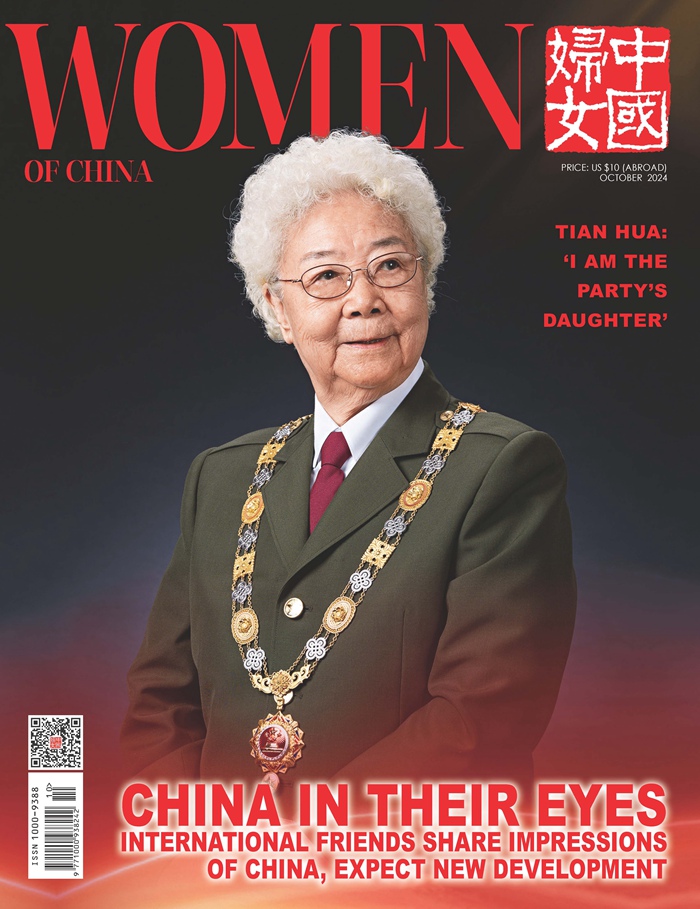Young Craftswoman Dedicates Herself to Passing on Chaozhou Woodcarving After Introducing Innovations into Traditional Folk Artform
Chen Jia, a young woman from Chaozhou, south China's Guangdong Province, has endeavored to pass forward and innovate on the craft of Chaozhou woodcarving, one of the most reputable forms of woodcarving in China and an item of intangible cultural heritage.
Chen, born in the 1990s in a family that has been engaged in Chaozhou woodcarving for many generations, cultivated a fondness for the folk art since her childhood and began to learn the craft starting from its most basic skill — sharpening carving knives — when she was 14 years old under the influence and support of her family.
When she first started off, it was hard to avoid scratching herself with the carving knives. Besides, she had to spend a great deal of extra effort to build up the necessary strength in her hands, which is required for the rough stage in carving, the most difficult step in the process for her. "I wanted to give up several times during the learning process, as I often hurt myself. It's also tough. My father tried to persuade me to quit woodcarving and find a more stable job," Chen said.
Chen recalled that she had a strong sense of achievement when her first woodcarving artwork, which took her several months to finish, was sold. “Since I have mastered the craft, I just keep going,” said the artist.
Chaozhou woodcarving is famous for its multilayered openwork carving techniques, which creates patterns against a hollowed-out backdrop. The art is also well known for its gold finish, as lacquer and gold foil are often applied to finished pieces. The step-by-step process for carving is rather complex. To finish one woodcarving piece, a woodcarver usually needs more than 30 carving knives and wooden hammers of different sizes.
A common theme for carvings includes different sea animals, such as crabs and lobsters, which symbolize a bountiful harvest and reflect the local culture of Chaozhou, since many Chaozhou people used to take up work as fishermen. According to Chen, the most difficult part of creating a woodcarving piece featuring crabs and lobsters inside a fishing net is carving out the patterns of the net.
To make her woodcarving works even more vivid, Chen always pays greater attention to the details of daily life, including observing real live crabs and lobsters.
In the past, Chaozhou woodcarvings were mainly used to decorate buildings, including serving as furniture and ritual items. However, they have since started to lose their charm among people in the era of modern living. To attract young people to better appreciate the traditional artform, Chen has innovated on the craft in terms of its themes, shapes and usage. She now uses raw wood materials to carve out small exquisite and decorative items and articles for daily use, such as combs and pendants for cell phones, hoping that more and more people will accept the artworks as to their liking. Chen has also created miniature-style Chaozhou woodcarving pieces featuring crabs and lobsters.
(Source: People's Daily Online)
Please understand that womenofchina.cn,a non-profit, information-communication website, cannot reach every writer before using articles and images. For copyright issues, please contact us by emailing: website@womenofchina.cn. The articles published and opinions expressed on this website represent the opinions of writers and are not necessarily shared by womenofchina.cn.






.jpg)

 WeChat
WeChat Weibo
Weibo 京公网安备 11010102004314号
京公网安备 11010102004314号